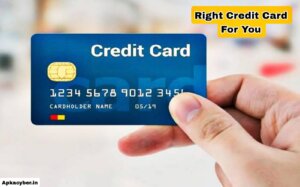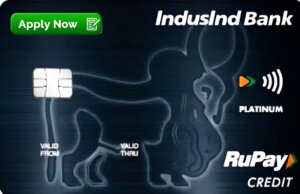
Choosing the best credit card can be a confusing and sometimes overwhelming process. With hundreds of options available, each offering unique benefits, interest rates, reward systems, and fees, it’s easy to get lost in the details. But selecting the right card doesn’t have to be complicated. By evaluating your financial habits, goals, and lifestyle, you can find a card that not only fits your needs but also helps you maximize value from every dollar spent.
This comprehensive guide will walk you through the factors to consider when choosing a credit card and help you understand which type might be best for your situation.
Understanding Your Financial Profile
Before looking at specific credit card offers, it’s important to evaluate your own financial circumstances. Ask yourself the following:
1. What is my credit score?
Credit cards are often categorized by the credit score they require. If your score is excellent (above 740), you’ll qualify for the best cards with the lowest interest rates and highest rewards. If your credit is fair (580–669) or poor (below 580), you’ll likely have fewer options and may need to look at secured or credit-building cards.
You can check your credit score for free through many financial institutions or services like Credit Karma or Experian.
2. Do I carry a balance each month?
If you tend to carry a balance, choosing a card with a low interest rate or a 0% introductory APR can save you money. On the other hand, if you pay off your balance in full each month, rewards and perks become more important than interest rates.
3. What are my spending habits?
Analyze your spending categories. Do you spend a lot on groceries, dining, travel, gas, or online shopping? The best card for you will offer elevated rewards or cashback in your most-used categories.
4. What are my financial goals?
Are you trying to earn travel rewards for a vacation? Build credit? Save money on interest? Earn cash back on everyday purchases? Your goal will largely determine the type of card that suits you best.
Types of Credit Cards
Let’s break down the main categories of credit cards available, each designed for specific needs.
1. Rewards Credit Cards
These cards offer points, miles, or cashback for purchases. They’re best for people with good to excellent credit who pay off their balances every month.
-
Cashback Cards: These cards return a percentage of your spending back to you, either as a statement credit, direct deposit, or check.
-
Best for: Everyday spenders who want straightforward savings.
-
Example: A card offering 2% cashback on all purchases or 5% in rotating categories.
-
-
Travel Rewards Cards: These cards earn points or miles that can be redeemed for flights, hotels, and more.
-
Best for: Frequent travelers who want to reduce travel costs or earn upgrades.
-
Example: A card offering 3x points on travel and dining.
-
-
Points-Based Cards: Often tied to a loyalty program or flexible points system like Chase Ultimate Rewards or Amex Membership Rewards.
-
Best for: Maximizers who are willing to strategize redemptions for the highest value.
-
2. Balance Transfer Credit Cards
These cards are designed to help you pay off high-interest debt by offering a 0% introductory APR on balance transfers.
-
Best for: People with existing credit card debt who want to save on interest.
-
Watch for: Balance transfer fees (typically 3%–5%) and the length of the promotional period.
3. Low-Interest or 0% APR Cards
Some cards offer 0% APR on purchases for an introductory period (usually 12–21 months). After that, a variable interest rate applies.
-
Best for: Financing a large purchase or managing cash flow temporarily.
-
Tip: Always know when the introductory period ends to avoid surprise interest charges.
4. Secured Credit Cards
Secured cards require a cash deposit (usually equal to your credit limit) and are typically used to build or rebuild credit.
-
Best for: Individuals with no credit history or bad credit.
-
Note: Many secured cards graduate to unsecured cards after consistent use.
5. Student Credit Cards
Designed specifically for college students, these cards have low credit requirements and may offer modest rewards or cashback.
-
Best for: Young adults looking to establish a credit history.
-
Warning: Keep balances low and pay on time to avoid debt traps.
How to Compare Credit Card Offers
When choosing a card, don’t just go by flashy offers. Consider the following key features:
1. Annual Fee
Some premium cards offer valuable perks but come with a high annual fee ($95–$550+). Make sure the benefits outweigh the cost.
2. APR (Annual Percentage Rate)
This is the interest rate you’ll pay if you carry a balance. If you plan to pay in full monthly, this isn’t a major concern, but if not, a lower APR is essential.
3. Rewards Rate
Look for cards that offer high earning rates in your top spending categories. Some cards offer flat-rate rewards, while others offer higher rates in specific areas like gas, groceries, or travel.
4. Sign-Up Bonus
Many cards offer a welcome bonus if you spend a certain amount within the first few months. This can provide a big boost in rewards early on.
5. Redemption Options
How easy is it to use your rewards? Can you redeem them for cash, travel, gift cards, or merchandise? Flexible redemption options are ideal.
6. Foreign Transaction Fees
If you travel internationally, choose a card with no foreign transaction fees (often 3%).
7. Credit Card Protections and Perks
Many cards offer perks such as purchase protection, travel insurance, car rental coverage, and extended warranties. These can add a lot of value if you use them.

Matching a Card to Your Lifestyle
Here are a few scenarios to help you see which card might be the best fit based on different goals and lifestyles.
1. The Frequent Traveler
You travel often for work or pleasure and want to earn points toward free flights and hotel stays.
-
Best Card Type: Travel rewards card with airline or hotel transfer partners.
-
Features to Look For: Airport lounge access, free checked bags, travel insurance, no foreign transaction fees.
-
Example: A card offering 3x on travel, $300 travel credit, TSA PreCheck reimbursement.
2. The Cashback Seeker
You want to earn a percentage back on everything you buy without worrying about redemption hassles.
-
Best Card Type: Flat-rate or rotating category cashback card.
-
Features to Look For: High base cashback (2%+), no annual fee, cashback boost in key categories like groceries or gas.
-
Example: A card that gives 1.5%–2% cashback on all purchases.
3. The Debt Consolidator
You want to pay off existing credit card debt with less interest.
-
Best Card Type: Balance transfer card.
-
Features to Look For: 0% APR for 15–21 months, low balance transfer fees, no annual fee.
-
Tip: Always make minimum payments on time to maintain the intro rate.
4. The Student
You’re in college and need a card to start building credit.
-
Best Card Type: Student card with low or no annual fee.
-
Features to Look For: Cashback on small purchases, credit tracking tools, forgiveness for a first late payment.
-
Example: A card with 1% cashback and incentives for good grades.
5. The Rebuilder
You’ve had credit issues and need to get back on track.
-
Best Card Type: Secured credit card.
-
Features to Look For: Reports to all 3 credit bureaus, refundable deposit, possibility to upgrade to unsecured card.
-
Tip: Use the card regularly and pay in full each month.

Common Mistakes to Avoid
Even the best credit card won’t help you if misused. Here are some pitfalls to avoid:
-
Ignoring the APR: Especially dangerous if you plan to carry a balance.
-
Missing payments: Late payments hurt your credit score and trigger fees.
-
Overvaluing sign-up bonuses: They’re helpful, but long-term benefits matter more.
-
Overspending for rewards: Don’t buy things you don’t need just to earn points.
-
Applying for too many cards: Each hard inquiry can lower your credit score slightly.
How to Apply for a Credit Card
Once you’ve chosen the right card:
-
Gather Information: Have your income, employment status, and housing costs ready.
-
Apply Online: Most applications take just a few minutes.
-
Wait for Approval: Some approvals are instant, while others may take a few days.
-
Start Using Responsibly: Keep utilization low (under 30% of your limit), pay on time, and monitor your credit.

Conclusion
There is no single “best” credit card for everyone — the best card for you depends entirely on your financial situation, spending habits, and goals. Whether you’re trying to earn travel rewards, reduce debt, or build credit from scratch, there’s a card out there that fits.
To find your match, start by understanding your own needs and limitations. From there, compare card offers based on the benefits that matter most to you. And remember — a credit card is a financial tool.